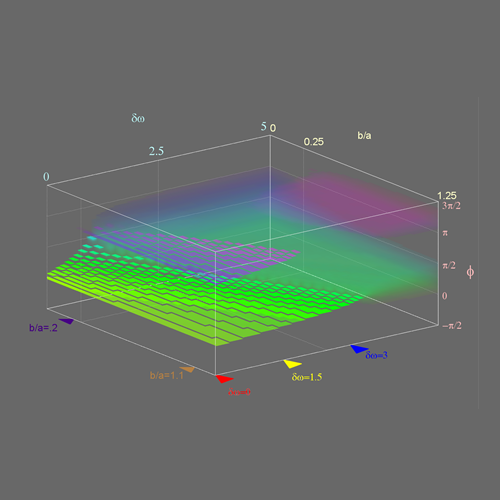
In this interesting study from last month, researchers set aside the usual goal of brain-mapping and/or making cool images of the brain while it does stuff to actually attempt to understand how brain activity emerges in space and time on a micro (millisecond) timescale during the completion of ordinary behaviors. "The researchers use a quantitative approach to brain coordination to learn about the whole 'parameter space,' or all the space on the line between segregation and integration."
Neuroscientists forge path toward understanding human brain
Date: March 13, 2014
Source: Florida Atlantic University
Summary: Metastable dynamics -- a subtle blend of integration and segregation in the brain that occurs on multiple levels (cells, brain regions, networks) -- underlies the real-time coordination necessary for the brain’s dynamic cognitive, behavioral and social functions, neuroscientists have found.
Florida Atlantic University neuroscientist Emmanuelle Tognoli, Ph.D., and J.A. Scott Kelso, Ph.D., neuroscientist and eminent scholar in science, at the Center for Complex Systems and Brain Sciences at FAU, recently published research in the journal Neuron titled "The Metastable Brain." The article indicates that metastable dynamics -- a subtle blend of integration and segregation in the brain that occurs on multiple levels (cells, brain regions, networks) -- underlies the real-time coordination necessary for the brain's dynamic cognitive, behavioral and social functions.
"Metastability can be visualized in terms of a line; with too much segregation on the left end of the line and too much integration on the right end of the line leading to disorders. The brain functions best somewhere in the middle where there is a dynamic balance of segregation and integration," said Tognoli. "If it is out of balance, it can lead to diseases such as autism, schizophrenia and epilepsy."
This research is timely as federal funding in support of the B.R.A.I.N. Initiative was approved early this year. The initiative is intended to accelerate the development and application of new technologies that will enable researchers to produce dynamic pictures of the brain that show how individual brain cells and complex neural circuits interact at the speed of thought.
"We know how neurons fire and we know they are connected," said Francis Collins, director of the U.S. National Institutes of Health in a 2013 interview with the Wall Street Journal. "We don't know how they act in concert to govern behavior, the essential question in treating neurological disease and mental health disorders."
While the majority of research conducted nationally is focused on "mapping" the brain, Tognoli and Kelso's work focuses on how brain activity evolves in space and time on a millisecond timescale during the course of ordinary behavior. The researchers use a quantitative approach to brain coordination to learn about the whole "parameter space," or all the space on the line between segregation and integration.
One of the next steps in this line of research will be to analyze which drugs are sound based on the theory of metastability. Furthermore, researchers can study which interventions will produce ineffective or counterintuitive consequences -- as would happen with drugs that enhance segregation.
Kelso, Tognoli and their colleagues' work on the human brain and behavior is carried out on FAU's Boca Raton campus under the auspices of the National Institute of Mental Health. FAU also has a research cluster of close to three dozen neuroscientists working at the John D. MacArthur Campus in Jupiter. These neuroscientists work on complementary ways to understand the brain using animal models and focusing on neural circuitry in collaboration with researchers from Scripps Florida and Max Planck Florida Institute.
Story Source:
The above story is based on materials provided by Florida Atlantic University. Note: Materials may be edited for content and length.
Journal Reference:
Emmanuelle Tognoli, J. A. Scott Kelso. (2014). The Metastable Brain. Neuron; 81(1): 35 DOI: 10.1016/j.neuron.2013.12.022
Abstract
Neural ensembles oscillate across a broad range of frequencies and are transiently coupled or “bound” together when people attend to a stimulus, perceive, think, and act. This is a dynamic, self-assembling process, with parts of the brain engaging and disengaging in time. But how is it done? The theory of Coordination Dynamics proposes a mechanism called metastability, a subtle blend of integration and segregation. Tendencies for brain regions to express their individual autonomy and specialized functions (segregation, modularity) coexist with tendencies to couple and coordinate globally for multiple functions (integration). Although metastability has garnered increasing attention, it has yet to be demonstrated and treated within a fully spatiotemporal perspective. Here, we illustrate metastability in continuous neural and behavioral recordings, and we discuss theory and experiments at multiple scales, suggesting that metastable dynamics underlie the real-time coordination necessary for the brain’s dynamic cognitive, behavioral, and social functions.
No comments:
Post a Comment